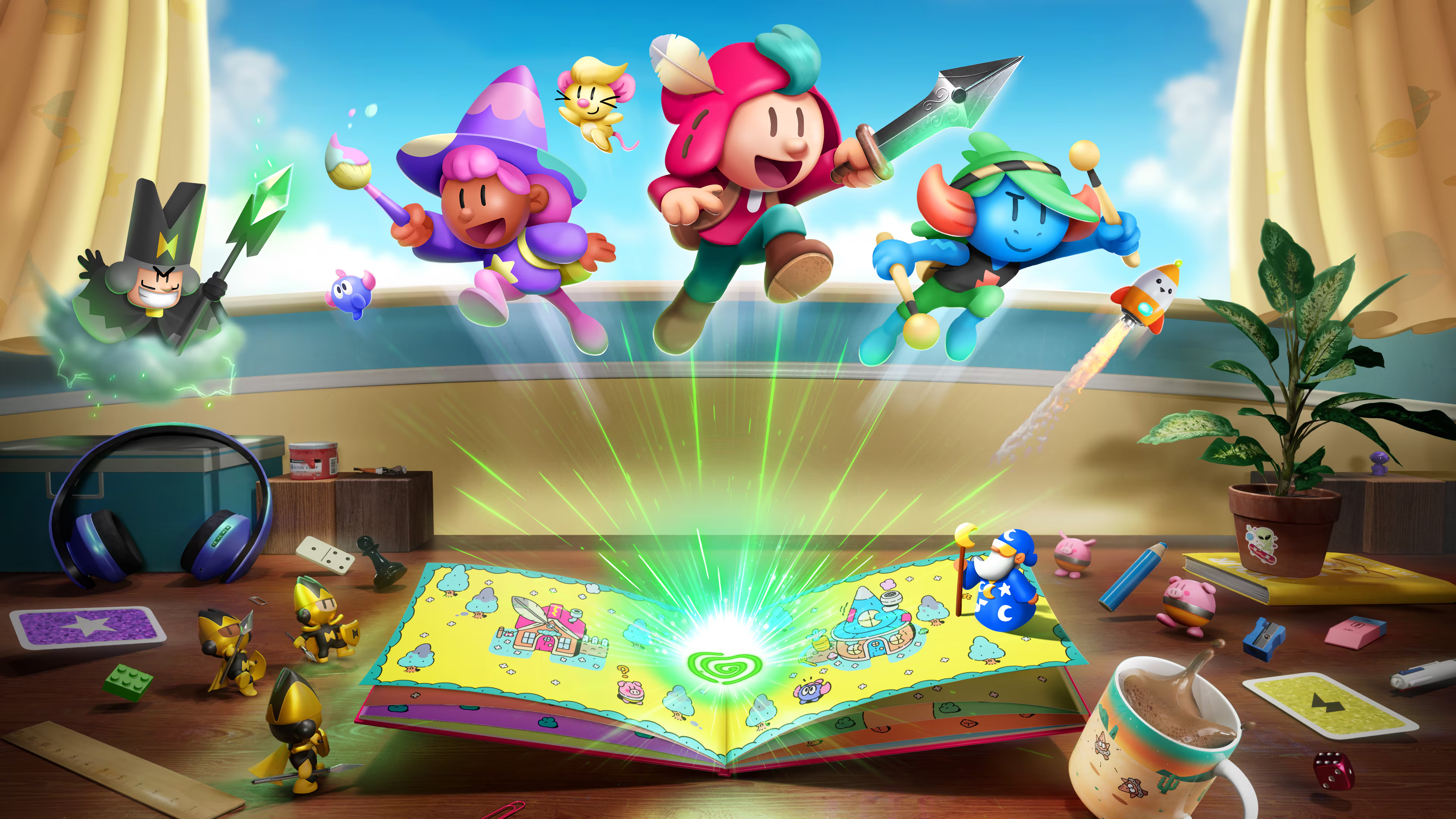There’s an unfathomable amount of charm in the way The Plucky Squire presents itself. Seeing our hand drawn 2D protagonist, Jot, leap out of a page from a book, and take a new 3D form for the first time, was immediately exciting. Jot then continued to not only exist in our world but many worlds, taking on even more forms and inhabiting new gameplay mechanics. In broad terms, the game is an action-adventure that inhabits 2D and 3D spaces whilst ultimately playing very similarly, but it’s almost a disservice to give it just one descriptor. It speaks to the childlike wonderment of having a toy box of different games all thrown together like an imagination knowing no bounds.
I came across this game a couple of years back, gleaming with excitement after watching the announcement trailer from All Possible Futures. The studio was co-founded by GameFreak (Pokémon) alum James Turner and Jonathan Biddle, creative director of The Swords of Ditto, making absolute sense as to how The Plucky Squire came to be the studio’s debut. Much like their previous work, it’s a game that instils some of that nostalgia, whilst being forward thinking in its design and at its core a lot of fun. Even as someone whose heart is cold from age, I thawed out to just how delightful The Plucky Squire can be.
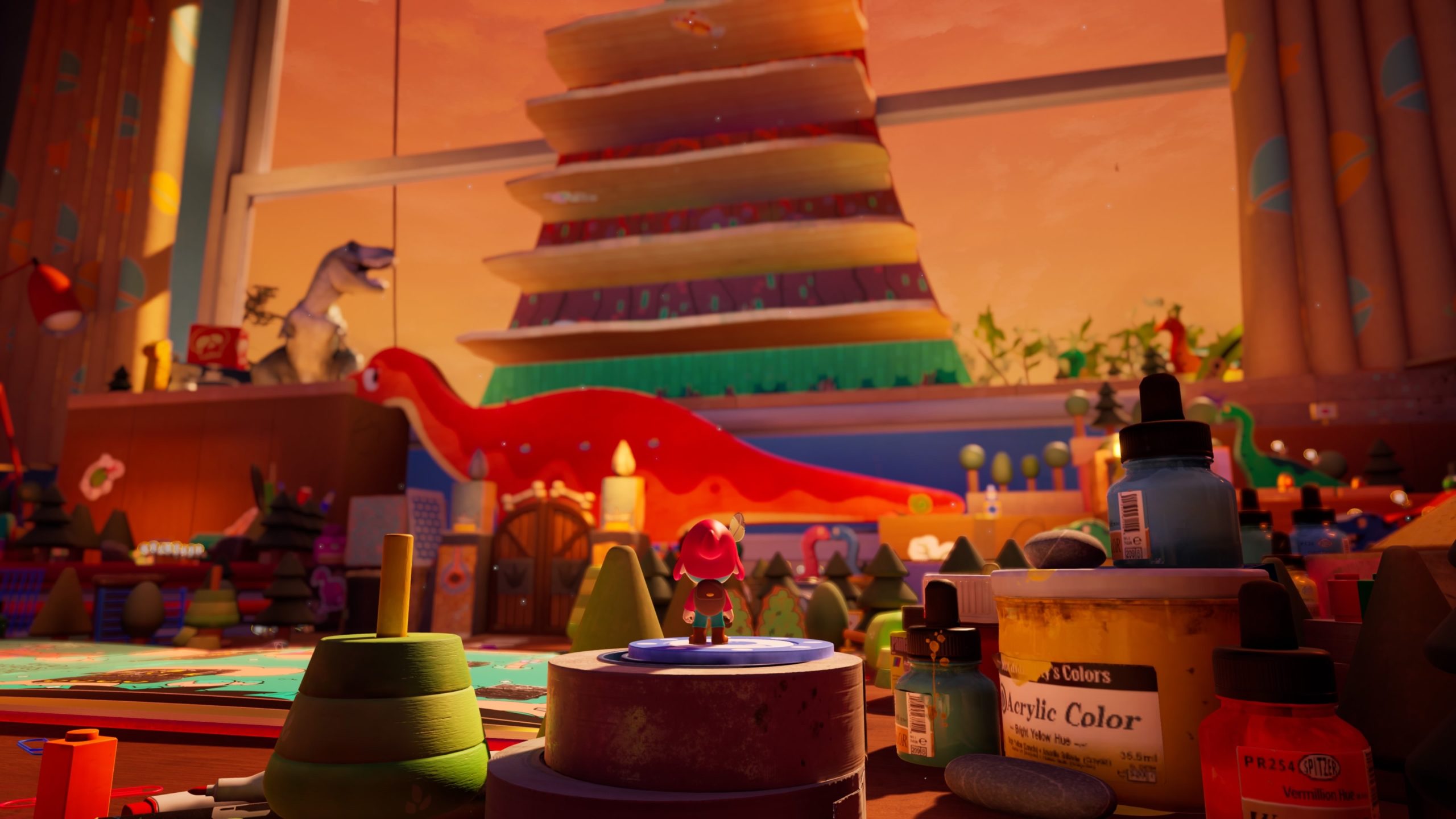
Plucking Up The Courage
The story follows Jot, the titular Plucky Squire and a hero to the people of Mojo; it’s also a best-selling children’s novel in the ‘real’ world. During one of Jot’s many adventures in the magical land of Mojo, an evil wizard named Humgrump discovers there’s more to life than the four corners of the book that they live in. This leads to Humgrump using his newfound powers to alter the book’s story, making it so this time he wins.
However, Jot is just as mighty and with the help of Moonbean, also discovers that he can use portals to go between the pages of the book and the real world. The real world being: a child’s bedroom whose desk has a smattering of doodles, art-making doodads and DIY fortresses made out of books, stationery and toys. It ties the basic gameplay loop and narrative neatly, giving a ruddy great excuse to explore both worlds throughout the game.
The dialogue is light and whimsical, with some jokes that didn’t land for me. Although there are some obvious meta moments in the game, whether as a bit or in the narrative, which do elevate the story into something more special. Jot isn’t taking on Humgrump on his own either as he has help from his best friends. We meet art mager Violet, rock ‘n’ troll legend Thrash and mousey Pip – with some guidance from the wise and Brat-Summer-coded Moonbeard.
Narratively speaking, it’s not a pageturner but there’s a world created here that’s so colourful, inspired by art and creation, with a tinge of British-ness that it won over my curmudgeonly sensibilities. The Plucky Squire pokes fun at IP franchising but I’d pick up Vol. 2 tomorrow if it meant spending more time in Mojo.
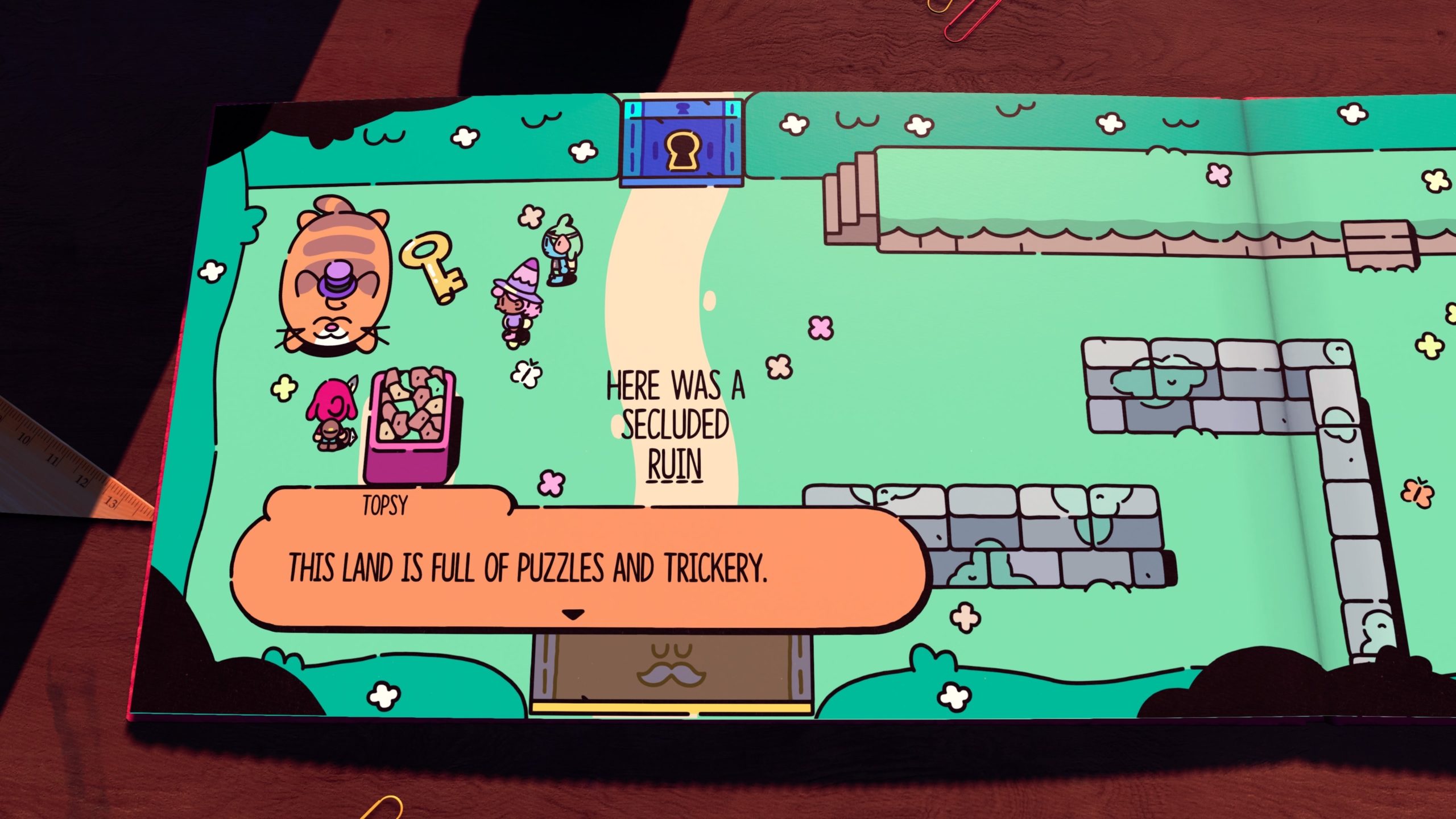
A Time’s Best Seller
In broad terms, the game is an action-adventure that inhabits 2D and 3D spaces whilst playing ultimately very similarly. The game uses a dynamic top-down camera that shifts focus depending on your environment. When you’re in the 2D book world, the camera is almost positioned like you’re looking at the book you’re playing. The corners of the levels show the pages and cover, whilst the centre has the prominent fold of a book – all of which feature the textured feeling of a hardback.
Out in the 3D world, things don’t feel as consistent. The camera doesn’t follow Jot as concisely with some of the many items adorned on the desk blocking your view. Teleporting in and out of a book can sometimes make the camera glitch, forcing me to quit out to menu but during the moments it matters most, it works fine.
Those moments are of course the puzzle solving and combat scenarios in the game. Jot can jump, roll and slice with his sword by default. It’s a very simple set up, that improves if you buy new attacks from shops that pop up time to time. Fully kitted out Jot has a jumping attack which has an AoE blast on impact, a spinning attack that pushes back groups of enemies and a throw of his sword even Kratos would be proud of.
The fights themselves don’t really change from your first hours to your last. Enemies will vary in appearance as you face the likes of bugs, angry animals and Humgrumps soldiers, but they all cycle the same few attack patterns. Whether it’s your standard melee, projectile or charging enemies, you’d have seen them all before you’re deep into the game.
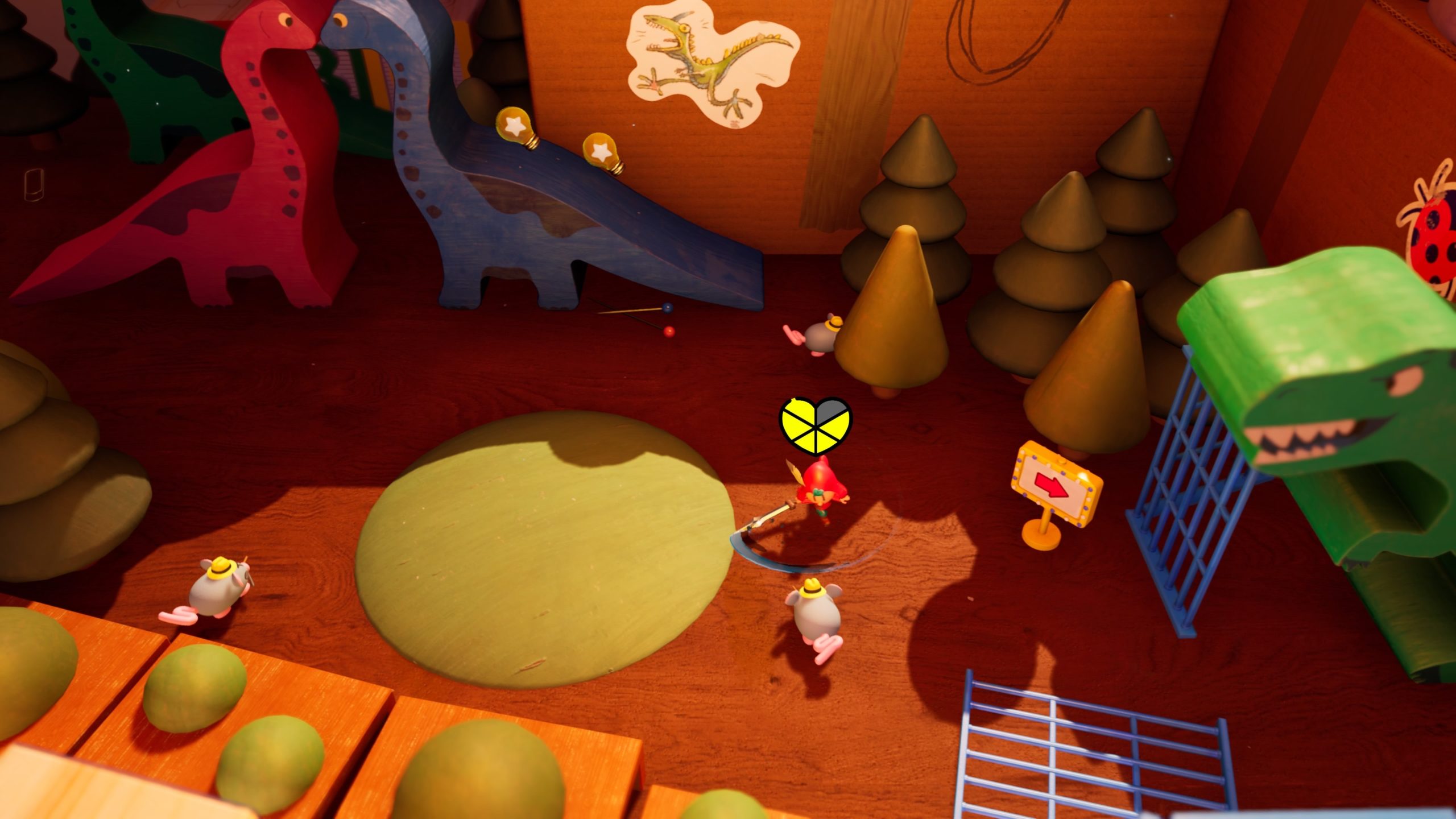
What If The Pen Was The Sword?
Enemies are quite aggressive towards Jot, which would enforce some tactile manoeuvres in combat scenarios. However, the ease at which to find a health pick-up negates any of the toughness. I don’t need something akin to Dark Souls in my game about a children’s book come to life, but if the stakes of losing felt higher, I think I’d feel more invested instead of button-mashing to progress.
But I can commend All Possible Futures on their approach to making this a game for young people to play or someone’s first, as the subtext surrounding it feels like this should be for everyone. Swapping out the pulverising for portals, The Plucky Squire is also rich in its puzzles. Jot’s first ability is being able to leap from the page and jump in somewhere else in the level, thanks to some designated portals.
Later, you’ll be able to change words in sentences scrawled on the page – creating funny moments like changing a sound speaker into cheese and other such nonsense. More importantly, it can change whole level layouts, new platforms to use or a key item to a puzzle. And then it starts building more on top of that like a stamp to stop items moving on the page, you can tilt the book to make objects move in the book world, flip entire pages to go back to earlier in the chapter.
It gets really creative and is probably my highlight of playing through the game. It’s impossible to break the puzzles, so you’re never truly stuck on what’s right or wrong and tickles that figurative “What if?” of experimentation. If you’re ever stuck, Moonbeard has a dialogue for every step of the puzzle, if you find his walkie-talkie-like speaker on the level.
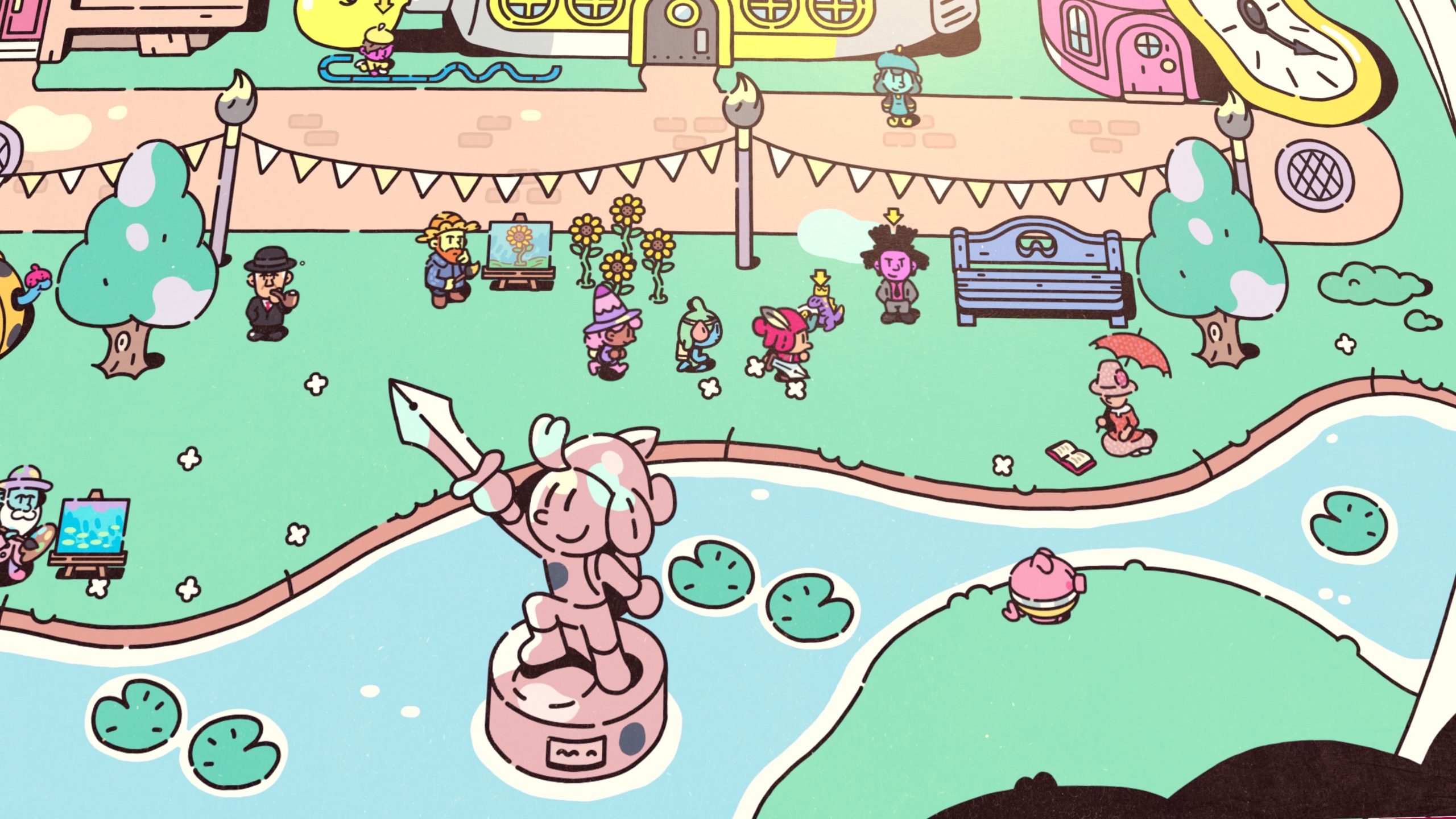
Breaking The Spine
If that wasn’t enough genre blending for you, then The Plucky Squire has even more variety of gameplay to be had. I won’t go into all of them, but the game also pays homage to some arcade classics by creating playable segments as part of the story. One that’s in the trailer is being able to teleport into a Magic: The Gathering-type card, and playing a turn-based battle with the elven archer already inside the card.
They’re a lot of fun but sadly short lived and I would have been excited to play through more of them. They’re also bespoke experiences, so you’re not jumping in and out of different gameplay types at your leisure, or playing whole levels designed with a new mechanic in mind. If the minigame is giving you bother, you can also just skip the segment entirely, which I may have utilised just once – I have Humgrump to thank for that.
If you can’t tell by now from the screenshots, The Plucky Squire has a brilliant 2D hand drawn art style for the book and a 3D art style that takes on the challenge of keeping up with it. It’s not a perfect juxtaposition between the two as the 3D world does have those Unreal Engine-isms about it, but it does well enough to accompany the hand drawn visuals.
Seeing Artia for the first time and meeting representations of real-life artists, all gathered in a mish-mash of their artistry in one square was so cool. I couldn’t help but enter every building, source every reference and geek out when I saw some of my favourites. Equally, there’s attention to detail on every page which is mostly explorable.
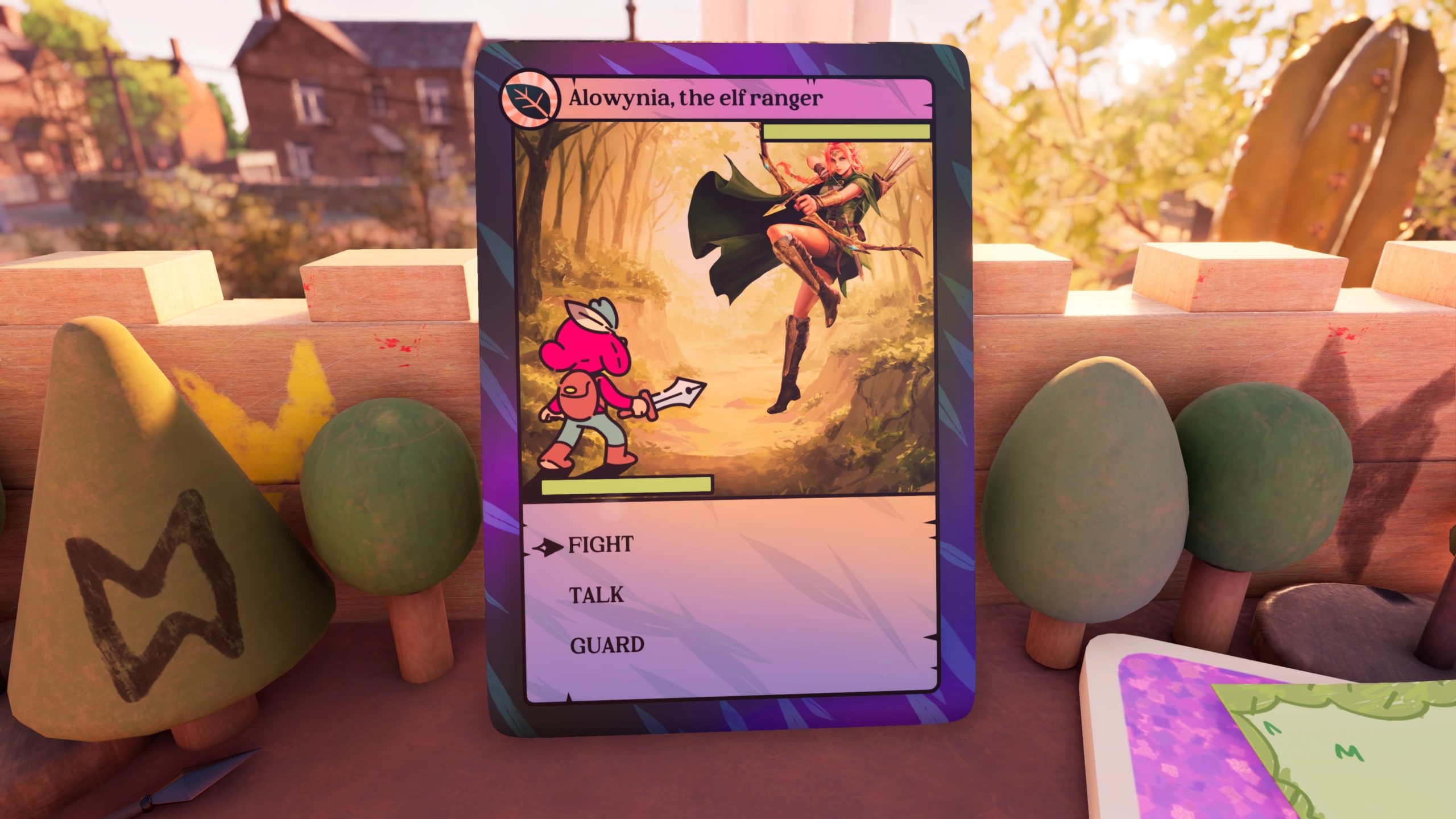
Rogue’s Art Gallery
Spurring me on to see all that there was to offer was the vibrant and diverse environments but also the collectibles. I managed to find all but three during my first playthrough, which is either a pretty big win for me or The Plucky Squire is a little easier than others. Either way, you can find Glitchbirds who are these cute chicken-like characters who got lost on their travels or more excitingly the art scrolls.
Some of them you’ll be able to buy at the shops but they’re all more or less hiding behind the environment. Upon collection, you can check them all out in the gallery and it’s all behind-the-scenes artwork during the development, different character designs and pre-release promo. There are 50 to find and every single one could easily be a new wallpaper – if the PS5 did those.
I’ve got to admit, I was quite whisked away with The Plucky Squire. Outside of a couple of technical issues I mentioned, it’s hard to not sit and playthrough 10 hours of it with a smile on your face. Whether that’s from the characters’ quippy and upbeat dialogue or the book breaking gameplay that throws what you expect out the window, its confidence and presentation just keeps you engaged.
Always worth to mention there’s a Story Mode that makes things easier, as well as a host of options to take some of the pressure of failing away, creating a fanciful journey for just about everyone. The Plucky Squire is just a delightfully charming time cover to cover.
The Plucky Squire is available now on PlayStation 5 (review platform), Xbox Series X|S, Nintendo Switch and PC via Steam.
Developer: All Possible Futures
Publisher: Devolver Digital
Disclaimer: In order to complete this review, we were provided with a promotional copy of the game. For our full review policy, please go here.
If you enjoyed this article or any more of our content, please consider our Patreon.
Make sure to follow Finger Guns on our social channels –Twitter, Facebook, Twitch, Spotify or Apple Podcasts – to keep up to date on our news, reviews and features.
